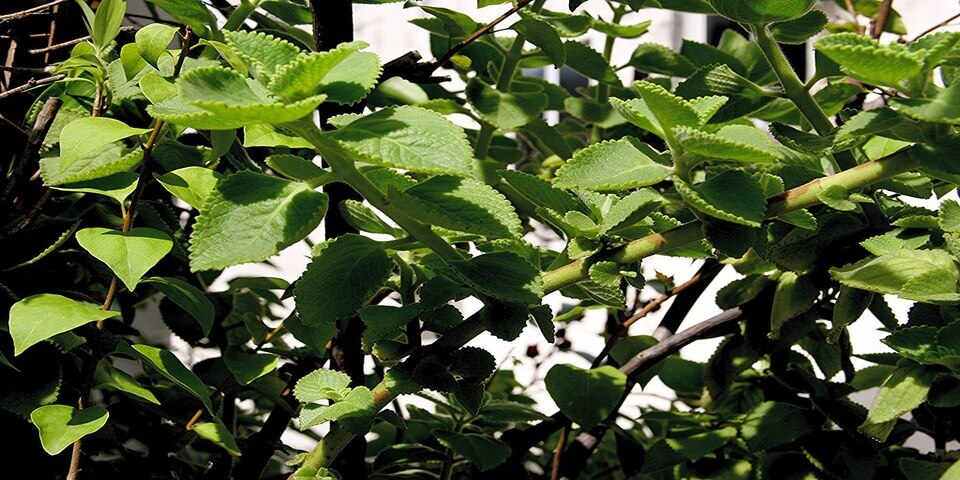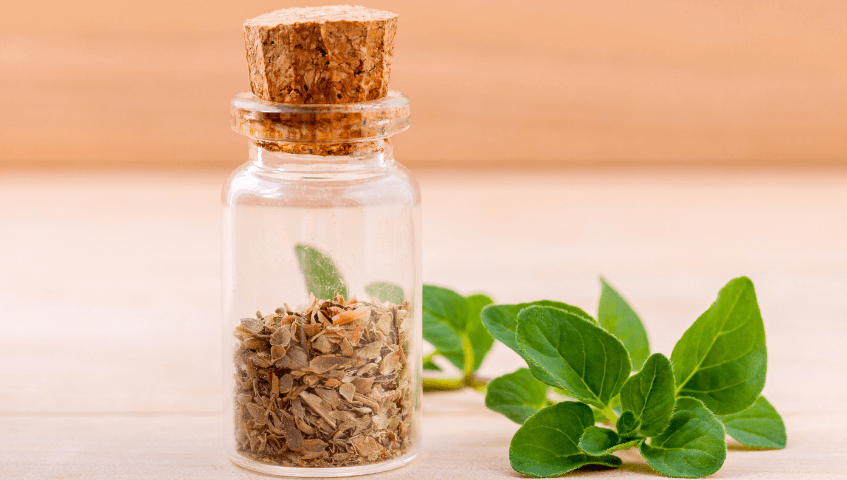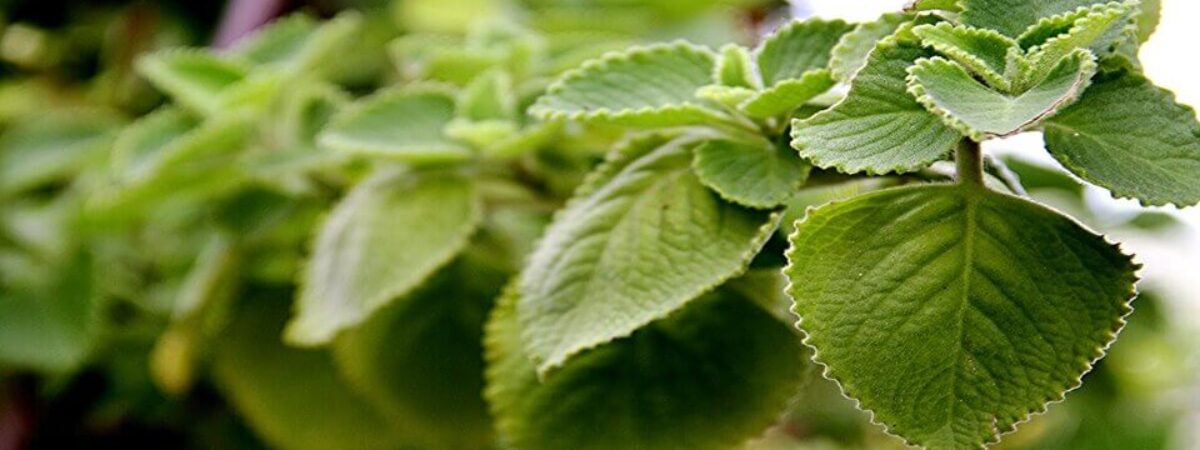Do not confuse Cuban oregano (Coleus amboinicus) as a plant that originates from Cuba, you will be surprised to know that it has many common names such as Mexican Mint, Spanish Thyme, and Indian Borage.
The interesting part is that Cuban oregano is not actually oregano.
Also, it has nothing to do with so many common names that it is known for such as Mint, Tyme, or Borage. It belongs to the Coleus species and is botanically known as Coleus amboinicus.
The leaves of Cuban oregano have an uncanny resemblance with mint leaves and it often makes people confused. The flavor also has some similarities to true oregano and mint.
These plants can be termed as semi-succulent as it retains water but not like typical succulents.
In this article, we will discuss how to grow and care for Cuban oregano.
What is Cuban Oregano?
Earlier Cuban oregano (Coleus amboinicus) was known as Plectranthus amboinicus.
Coleus and Solenostemon were combined and put into the Plectranthus genus.
Around August 2019, a group of researchers from India, UK, Australia, Thailand and France published a paper stressing that Coleus and Solenostemon have distinct genera and cannot be combined.
Commonly we see Coleus as a genus of perennial herbs and shrubs. Most Coleus is grown as houseplants or ornamentals.
Coleus amboinicus grows about 3 feet in height and can spread up to 2-3 feet. These are often grown as kitchen windowsill plants where outdoor planting is not feasible.
If you live in a hotter climatic zone, a fully shaded area for the plant to grow is preferable. Otherwise, Cuban oregano grows best in partial shade.
A soil pH of 6.0 to 7.5 would be the best to grow this plant.
As this is a semi-succulent plant, it retains some water and can be drought-tolerant once fully established.
About 4 hours of morning sun is enough for this plant to thrive.
Make sure, you do not expose it to harsh afternoon sun to avoid sunburn of the leaves.
The plant blooms around mid-spring and attracts enough bees with its pink and white flowers unless you live in a place where it is too cold for the plant to bloom.
History of Cuban Oregano
The history of Cuban oregano is somewhat sketchy. People claim it originated from various countries such as Indonesia, India, Africa.
But regardless of its origin, the plant has been thriving across the globe in various climatic conditions.

In some countries, people use it in various cuisines and it also replaces the common or true oregano to add a pungent and more minty flavor than the true oregano.
In India, it is used widely in various kinds of chutneys and is an integral part of many recipes.
Fried Cuban oregano leaves are widely used on top of Biryani (a popular dish in the Indian Subcontinent) to garnish it. Fried leaves not only taste good but are rich in vitamins and Omega-6 fatty acids.
In Vietnam, they use it in various soups as flavors.
Chopped Cuban oregano leaves can also be added to various dishes to improve flavors. But make sure to use half of what you would use when you use true oregano since Cuban oregano has a stronger flavor than the true one.
Cuban oregano has been widely used to treat cough and symptoms of asthma effectively. Application of essential oil out of Cuban oregano helps soothe the skin from bug bites.

The oil in the leaves of this plant also has properties of insecticides that help other plants in the vicinity to grow healthier and pest-free. It can restrict the growth of potential insects and fungi.
How to Propagate Cuban Oregano?
You can directly buy a seedling and plant it and let the Cuban oregano grow.
The best way to propagate Coleus amboinicus is from cuttings.
With a scissor, cut about 6 inches of new growth from an existing Cuban oregano plant. Trim any leaves from the bottom 2-3 inches and place the cutting in the clear glass of water where you can see the root growth.

Place the glass in the kitchen windowsill or you can also keep it in a sun protected outdoor area.
In about 4 weeks, new root growth can be seen. Then take a pot with an organic potting mix and plant the root in there.
Make sure to bury the root completely as well as the part of the stem from where you had trimmed the leaves. Keep the pot on a kitchen windowsill or any sun protected area outside and water frequently.
In about 4 to 8 weeks, you can witness new plant growth.
Transplanting to the ground
As the new plant starts to grow, it needs to be transplanted either to a bigger container or to the ground.

While transplanting on the ground, make sure the soil is loose with a pH of around 6.0 to 7.5 and is also well-draining. Also, make sure, the Cuban oregano plant gets about 4-5 hours of morning sun for better growth.
After taking care of the above stuff, dig a deep hole and put some compost or manure inside the hole. Take the plant out of the container and put it carefully into the hole and backfill the hole with soil and then water it.
Transplanting to container
Once the plant starts to grow, it becomes imperative to move it to a bigger container to foster better growth.
Take a 12-inch to 14-inch deep container and fill it with loose, well-draining soil and potting mix. Make a hole similar to the length and width of the root ball that you are going to plant.
Carefully take out the plant from the previous container and put it gently in the hole that you have just made. Backfill the hole with soil and water the plant slowly till the water oozes out the drainage hole.
Place the container in a place where the Cuban oregano plant should get about 4-5 hours of morning sun.
How to Grow Cuban Oregano?
Cuban oregano is a happy go-lucky plant and does not seek much attention for its growth.
Water the plant carefully and avoid overwatering especially during monsoon when the plant will receive rain water. Try to add about an inch of water to the plant every week or whenever there is dryness on the topsoil.
For better growth during the spring and summer, you can plan to add NPK (5-5-5) fertilizers.
Look for any dead leaves and take them out immediately. Also regularly take cuttings from the plant to let it spread horizontally like a vine instead of growing vertically.
Make sure your Cuban Oregano plant is getting enough sun but not over-exposed to harsh sun. To protect the plant from harsh sun, you can put up a shade net.
Coleus amboinicus is a sturdy plant that can withstand the Sun but over-exposure might impact its overall well being.
You can consider mulching during winter to protect the plant from the cold snaps that might affect the plant negatively.
Best Growing and Caring Tips
- Make sure the plant gets about 6 hours of morning sun.
- Protect the plant from harsh sun by erecting shade net.
- Water the plant thoroughly. Make sure you are adding one inch of water every week. Use a rain gauge during monsoon to keep a track of natural water the plant receives.
- Use NPK (5-5-5) fertilizers during spring and summer to foster growth.
- Mulch the plant with straw to protect any damage to the plant from cold snaps during winter.
Toxicity
Coleus amboinicus is quite safe to consume for us but it is not the case with your pets. Pets might get attracted to this minty flavored plant easily but this is toxic for them to consume.
So make sure you grow them in a protected area that is out of reach for your pets.
Cultivars to choose
The most common way to get your hands on Cuban oregano plants can be your local nursery. You might get hold of a few cuttings from somewhere and grow them in your backyard.
You also find a variegated variety of Coleus amboinicus with green leaves and white margins.
There are few cultivars you can try your hands on such as Wedgewood and Well Sweep Wedgewood.
How to manage diseases and pests?
As Cuban oregano has inherent anti-fungal and insecticide properties, it is rarely affected by any pests or diseases.
Sometimes, spider mites make webs and feed on their leaves. Though not harmful, an infestation of spider mites, in the long run, can impact the plant’s well-being.

You can remove the spider mites with the application of neem oil spray. Apply it several times till you get rid of the spider mites.
Also watch out for mealybugs (Pseudococcidae spp) that can really infest the plant pretty quickly. It feeds on leaves and excrete honeydew.
If you see ants around your plants then be sure that it has been infested with mealybugs. The mealybugs attract ants by excreting honeydew.
If left unchecked, mealybugs infestation can be pretty fast and can lead to death of your plant.
Use a combination of pressurized water hose, mix of soap water and neem oil to drive these bugs out. Apply several times till they are out of sight.
Make sure to keep the leaves dry when you water the plants and that will keep most pathogens at bay.
Harvesting Cuban Oregano
It’s pretty easy to harvest Cuban oregano. But make sure you are harvesting it in the correct way so as not to impede the growth of the plant.
Do not take cuttings from random places especially from the bottom end of the stem. It will make the plant grow taller instead of bushier.

After harvesting, you can choose either to use it immediately or dry the leaves properly and store it for future use.
Recipe Ideas
As we discussed earlier, Cuban oregano has a strong presence across the globe in many cuisines.
In fact, you can always replace the common or true oregano with Cuban oregano for a stronger aroma and flavor.

In the Indian subcontinent, Cuban oregano is used widely in preparing various chutneys that one can have with bread and it gives an amazing flavor.
It has been found that in Puerto Rico, they use it in sofrito. It forms an essential ingredient in preparing black bean soup in Cuba.
Have you grown Cuban oregano before? You can share your experience with us in the comment section below.
If you have not, then this is the time to start now as you have all the information you need to grow and care for Cuban oregano.






